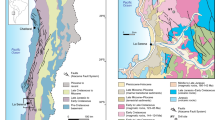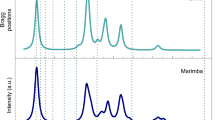Abstract
THE recent communication by Sir Edward Bailey1, describing the brecciation of rocks beneath boulder clay, is most interesting, and his opinion that this phenomenon is unlikely to be due to ice-movement agrees with nay own observations. Examples can be seen in many places, and a particularly striking one was observed by me recently near Bury St. Edmunds, where chalk was seen to be shattered for a depth of 15 ft. below boulder clay. The glacial deposit at this section consisted largely of rounded pellets in a matrix of powdered chalk and sand, with many flints and occasional fragments of Jurassic septaria, Bunter quartzites and rare pebbles of Old Red Sandstone porphyrites. The state of the chalk under this boulder clay contrasted with that in the glacial deposit, as it was broken into angular pieces, but no rock fragments foreign to the chalk were found. Occasional rafts of this chalk-breccia had been thrust up into the boulder clay.
This is a preview of subscription content, access via your institution
Access options
Subscribe to this journal
Receive 51 print issues and online access
$199.00 per year
only $3.90 per issue
Buy this article
- Purchase on Springer Link
- Instant access to full article PDF
Prices may be subject to local taxes which are calculated during checkout
Similar content being viewed by others
References
Nature, 164, 1130 (1949).
Nature, 164, 318 (1949).
Author information
Authors and Affiliations
Rights and permissions
About this article
Cite this article
BADEN-POWELL, D. Pleistocene Deep Weathering. Nature 165, 488–489 (1950). https://doi.org/10.1038/165488b0
Issue Date:
DOI: https://doi.org/10.1038/165488b0
Comments
By submitting a comment you agree to abide by our Terms and Community Guidelines. If you find something abusive or that does not comply with our terms or guidelines please flag it as inappropriate.



